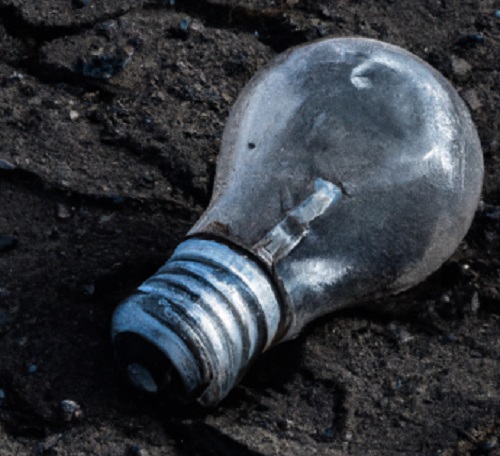Energy
Achtung: Learning from Germany’s energy shambles: Terry Etam

From the Frontier Center for Public Policy
By Terry Etam
No one interviews mechanics about the challenge of an energy transition. In fact, the voices of the many that maintain the system get accused of disinformation for pointing out mechanical realities like “That isn’t gonna work.”
In 1880, a great author, Mark Twain, whom you may never hear spoken of again because he had the audacity to write in the vernacular of the day, wrote an extremely funny essay called The Awful German Language. “Surely there is not another language that is so slipshod and systemless, and so slippery and elusive to the grasp…There are ten parts of speech, and they are all troublesome…Now let the candidate for the asylum try to memorize those variations, and see how soon he will be elected…In German, a young lady has no sex, while a turnip has…a tree is male, its buds are female, its leaves are neuter; horses are sexless, dogs are male, cats are female-tomcats included, of course; a person’s mouth, neck, bosom, elbows, fingers, nails, feet, and body are of the male sex, and his head is male or neuter according to the word selected to signify it…My philological studies have satisfied me that a gifted person ought to learn English (barring spelling and pronouncing) in thirty hours, French in thirty days, and German in thirty years.”
I have no idea if his synopsis is sound, but I do know it is funny as hell and it comes leaping to mind upon any contemplation at all of Germany’s current energy mess. I can’t think of a better turn of phrase than to describe it as slipshod and systemless and slippery and elusive to the grasp.
The lunacy began more than a decade ago, but it took a few years before serious consequences started to appear. They are here now, in full force. Primary among them was the decision to shut down all nuclear power in the country with no suitable base load replacement other than… coal, the last imaginable energy source one could imagine Germany purposely pursuing after a decade of their energy transition shouting. In what had to have been a staggeringly embarrassing moment, the German government even went as far as destroying a village to expand a coal mine. In 2023, not 1923.
To be fair, Germany’s energy demise was hastened by the Russian war and subsequent loss of Russian gas (and to be even more fair, I recognize that as a Canadian I have absolutely no moral high ground to ridicule anyone else’s government). As The Economist put it: “By weaponising the natural gas on which Germany’s mighty industrial base relies, the Russian president is weakening the world’s fourth-biggest economy and its third-biggest exporter of goods.”
But that was an accelerant, and not the match. For more than a decade, Germany has been not just turning away from fossil fuels faster than possible, it has fed mightily into the global narrative that fossil fuels were last century’s news. The overarching anti-hydrocarbon stance, that to maintain a cent in any fossil fuel investment was to risk good money on soon-to-be ‘stranded assets’, has been allowed to take over the public discourse as a fact, with no opposition from even the likes of those now in a very bad spot for allowing these concepts to take root as modern energy givens.
The German war on hydrocarbons is all the more peculiar because of the way in which the country has wrapped almost its entire industrial strategy around them. A physicist named Shaun Maguire outlined it well on Twitter, and thank heavens for people with weird fascinations. (@shaunmmaguire: “I’ve been obsessed with the chemicals industry since I was a kid.”)
Mr Maguire wrote an illuminating thread on Germany’s economy and its relationship to both energy and chemicals (an epic quote right off the top: “Germany’s decision to shut down their nuclear facilities was one of the stupidest political decisions in history. Most of their economy is based on turning energy into chemicals.”).
A profile of Ludwigshafen points out some startling facts. First, the place is enormous. BASF, the massive chemical company, has a ten square kilometre facility in the city with its own transit system.
Ludwigshafen consumes about as much natural gas as Switzerland. The output from Ludwigshafen, per BASF’s website, supports: Agriculture, Automotive/Transportation, Chemicals, Construction, Electronics/Electric, Energy & Resources, Furniture & Wood, Home Care and Industrial/Institutional Cleaning Solutions, Nutrition, Packaging & Print, Paints & Coatings, Personal Care/Hygiene, Pharmaceuticals, Plastics & Rubber, Pulp & Paper, and, finally, Textiles, Leather & Footware. The website has pull-down menus for each category that outline a dizzying array of pretty much everything you’ve ever laid your hands on that wasn’t breathing, photosynthesizing, or dug out of the ground.
Those huge natural gas pipelines flowing into Germany are the very lifeblood of German industry, as much or more so than anywhere else. In many places, without natural gas people would simply freeze. In Germany, they would freeze in many square miles of abandoned petrochemical factories. Sure, it would be steampunk-cool way to go, but other than that there would be nothing aesthetic about it.
Last year, I stood slack-jawed in wonder at news that Germany had constructed an LNG import terminal in 5 months flat (an LNG-Importeinrichtung – feminine). How on earth… it takes a year to get a permit for anything in the western world. How could they build her so fast?
Now I know. They had to. The bedrock of Germany’s mighty industrial base depended on it.
There are no grounds for entertaining the thought that Germany is incapable of designing, building, and operating an optimal energy system. It is crazy to think otherwise; Germany is collectively a formidable engineering talent.
Yet it is equally crazy to shut down a bunch of nuclear reactors with no suitable backup base load power (and remember, the nuclear plants were put on the boat to Valhalla before Russian antics).
Some of Germany’s current energy plans are equally as crazy, such as being short of power and simultaneously activating a mass conversion to electrical heat pumps. Whatever you do in an electrical grid, the one thing you don’t want to do is increase demand peaks. An overarching goal should be to reduce them, because the highest possible load, the point of maximum demand, sets the capacity need for the entire system. If on the coldest, highest demand day of the year, a system needs 1,000 units, it needs to be built and maintained to provide 1,000 units, even if the average demand is only half that.
Germany’s heat pump rollout plan is a scheme that will do exactly the wrong thing. It will significantly increase demand at the exact worst time. It is like taking the example above and resetting the peak to 1,200 units, even if the average remains at 500. The entire system now needs to be able to provide 1,200 on demand.
What happens if it doesn’t? Well, what do you think happens if there is a power failure during the coldest snap of the year, when wind and solar output are low, or if reliance on wind/solar is too great and they can’t perform? It will be catastrophic.
So you might be driven to madness trying to unravel this knot, because on the face of it Germans can’t both be engineering-competent and simultaneously run their energy system into the ground.
The answer to this impossible scenario, how such a contradiction can exist in reality, is due to two things: the politicization of the energy system, and the failure of that energy system to explain and defend itself.
Politics, as we know, is where logic goes to die. Popularity means power; and you can gain popularity in general by keeping citizens happy (hard to do, always something to complain about), or by terrifying them. It should not be a surprise that out of that swamp (one rude Trump-derived nomenclature that I can’t disagree with) comes a plethora of committees and committee decisions made by people for whom reality will always be steamrolled by the quest for popularity (there are exceptions that prove this rule, showing up about three times per century somewhere on the globe).
Thus we get governments fighting to eliminate hydrocarbons for political reasons; because they want to be seen as ‘being on the right side’, and because one side has been so much better at it (more on that in a second), being ‘an environmentalist’ is now colloquially equivalent with being anti-hydrocarbon.
Stuck in the middle of the fear mongering are the plumbers, the farmers, the mechanics, the drivers, the people that actually keep the wheels turning, the ones with their feet grounded in reality and not in armchair-industrialism. Included in that camp are the ones that check the valves and drill the wells that keep the world’s fuel flowing. Others can argue about what it will look like in 40 years, but for the hands-on people, the story is all about today.
But those voices get lost in the noise storm. No one interviews mechanics about the challenge of an energy transition. In fact, the voices of the many that maintain the system get accused of disinformation for pointing out mechanical realities like “That isn’t gonna work.” Capable, knowledgeable people that point out the rising risks of an unreliable electrical grid are shouted down as ‘fossil fuel shills’ or agents of misinformation.
Sadly then, we are forced to live with these pile-driving spasms of bad decisions as part of a political process, democracy, that most would never abandon. And hey, it’s not easy for participants either – Imagine the chaos between the ears of German Chancellor Olaf Scholz, coming to Canada seeking more LNG, then sitting at a press conference listening to Justin Trudeau say there is no business case to be made for LNG to Germany, and being unable to speak against such gibberish because Climate, knowing full well he would go to another country to get an assured supply (and he did, Qatar).
One can’t help but summon sympathy for Mr. Twain’s German-themed bewilderment when hearing what has happened thus far in 2024. Germany recently approved $44 billion in new expenditures to build brand new gas-fired power plants (pacifying their supporters by declaring that the plants must be able to burn hydrogen and are ‘expected to’ do so by 2040 – not hard to spot the weasel words, is it). Note that new natural gas power plants can not be blamed on Russia, because this is just more consumption and not a replacement for supply. To rub salt in the Energiewende-wound, Bloomberg via Yahoo chimes in with the headline, “Germany’s Budget Chaos Leaves Green-Energy Projects in Limbo.” Seems that they found $44 billion for natural gas easily enough though. What was that transition stuff about, again?
Such mystifying behviour is at least partially explained by the second reason that energy system contradictions can exist – the dumbfounding size of the energy education deficit, and for that the hydrocarbon industry can at least partly look in the mirror, because the energy system has not done enough to explain and defend itself.
Consider Alex Epstein for example, a one-man energy-education army that has amassed a huge following. He’s written great books, and even appeared before congress, largely because he has taken the time and effort to point out the colossal benefits that hydrocarbons have brought humanity. Humanity as we know it wouldn’t exist without the hydrocarbon system, nor would most (or all) of the technological innovations we enjoy. Mr. Epstein spells this out, of his own accord, to far greater effect than the entire industry has in the past 30 years.
Many of those energy points are not hard to make, such as this foundational one that even Big Oil CEOs seem unable to articulate: “If one wishes to ascribe certain negative characteristics to hydrocarbon usage, it is only rational to consider the benefits that are derived from same.” And yet the opponents of hydrocarbons have done such a resoundingly thorough and effective job of amplifying any negativity that that simple statement is heard almost nowhere, except by Alex and a handful of others. Those earning massive pay stubs should be leading the charge, and they just aren’t. Not effectively anyway.
A general recognition of the boundless value of current fuels is coming; the question is, now much pain until that becomes commonly understood. The reality is that hydrocarbon usage continues to grow and set record consumption levels, including coal, and will for a long time. The evidence is pretty stark and clear, even for the likes of the IEA that predicts an imminent demise in hydrocarbon demand over and over and over, then keeps re-upping demand estimates as they happen.
A great number of innovative ideas are making their way to market that will start making inroads on how we deal with energy and industry. But until proven at scale, the existing system needs to be protected from frightened mobs, and someone needs to explain reality to them.
We all know what’s going to happen; an energy transition will happen over the next century at a realistic pace as new technology/nuclear/whatever becomes dominant. The challenge is: How much damage will be done before our elected representatives start choosing optimization, as opposed to whatever it is they’re doing now?
Terry Etam is a columnist with the BOE Report, a leading energy industry newsletter based in Calgary. He is the author of The End of Fossil Fuel Insanity. You can watch his Policy on the Frontier session from May 5, 2022 here.
Business
Natural gas pipeline ownership spreads across 36 First Nations in B.C.

Chief David Jimmie is president of Stonlasec8 and Chief of Squiala First Nation in B.C. He also chairs the Western Indigenous Pipeline Group. Photo courtesy Western Indigenous Pipeline Group
From the Canadian Energy Centre
Stonlasec8 agreement is Canada’s first federal Indigenous loan guarantee
The first federally backed Indigenous loan guarantee paves the way for increased prosperity for 36 First Nations communities in British Columbia.
In May, Canada Development Investment Corporation (CDEV) announced a $400 million backstop for the consortium to jointly purchase 12.5 per cent ownership of Enbridge’s Westcoast natural gas pipeline system for $712 million.
In the works for two years, the deal redefines long-standing relationships around a pipeline that has been in operation for generations.
“For 65 years, there’s never been an opportunity or a conversation about participating in an asset that’s come through the territory,” said Chief David Jimmie of the Squiala First Nation near Vancouver, B.C.
“We now have an opportunity to have our Nation’s voices heard directly when we have concerns and our partners are willing to listen.”
Jimmie chairs the Stonlasec8 Indigenous Alliance, which represents the communities buying into the Enbridge system.
The name Stonlasec8 reflects the different regions represented in the agreement, he said.
The Westcoast pipeline stretches more than 2,900 kilometres from northeast B.C. near the Alberta border to the Canada-U.S. border near Bellingham, Wash., running through the middle of the province.

It delivers up to 3.6 billion cubic feet per day of natural gas throughout B.C. and the Lower Mainland, Alberta and the U.S. Pacific Northwest.
“While we see the benefits back to communities, we are still reminded of our responsibility to the land, air and water so it is important to think of reinvestment opportunities in alternative energy sources and how we can offset the carbon footprint,” Jimmie said.
He also chairs the Western Indigenous Pipeline Group (WIPG), a coalition of First Nations communities working in partnership with Pembina Pipeline to secure an ownership stake in the newly expanded Trans Mountain pipeline system.
There is overlap between the communities in the two groups, he said.
CDEV vice-president Sébastien Labelle said provincial models such as the Alberta Indigenous Opportunities Corporation (AIOC) and Ontario’s Indigenous Opportunities Financing Program helped bring the federal government’s version of the loan guarantee to life.
“It’s not a new idea. Alberta started it before us, and Ontario,” Labelle said.
“We hired some of the same advisors AIOC hired because we want to make sure we are aligned with the market. We didn’t want to start something completely new.”
Broadly, Jimmie said the Stonlasec8 agreement will provide sustained funding for investments like housing, infrastructure, environmental stewardship and cultural preservation. But it’s up to the individual communities how to spend the ongoing proceeds.
The long-term cash injections from owning equity stakes of major projects can provide benefits that traditional funding agreements with the federal government do not, he said.
Labelle said the goal is to ensure Indigenous communities benefit from projects on their traditional territories.
“There’s a lot of intangible, indirect things that I think are hugely important from an economic perspective,” he said.
“You are improving the relationship with pipeline companies, you are improving social license to do projects like this.”
Jimmie stressed the impact the collaborative atmosphere of the negotiations had on the success of the Stonlasec8 agreement.
“It takes true collaboration to reach a successful partnership, which doesn’t always happen. And from the Nation representation, the sophistication of the group was one of the best I’ve ever worked with.”
Alberta
Alberta Premier Danielle Smith Discusses Moving Energy Forward at the Global Energy Show in Calgary

From Energy Now
At the energy conference in Calgary, Alberta Premier Danielle Smith pressed the case for building infrastructure to move provincial products to international markets, via a transportation and energy corridor to British Columbia.
“The anchor tenant for this corridor must be a 42-inch pipeline, moving one million incremental barrels of oil to those global markets. And we can’t stop there,” she told the audience.
The premier reiterated her support for new pipelines north to Grays Bay in Nunavut, east to Churchill, Man., and potentially a new version of Energy East.
The discussion comes as Prime Minister Mark Carney and his government are assembling a list of major projects of national interest to fast-track for approval.
Carney has also pledged to establish a major project review office that would issue decisions within two years, instead of five.
-

 Crime12 hours ago
Crime12 hours agoHow Chinese State-Linked Networks Replaced the Medellín Model with Global Logistics and Political Protection
-

 Addictions13 hours ago
Addictions13 hours agoNew RCMP program steering opioid addicted towards treatment and recovery
-

 Aristotle Foundation14 hours ago
Aristotle Foundation14 hours agoWe need an immigration policy that will serve all Canadians
-

 Business11 hours ago
Business11 hours agoNatural gas pipeline ownership spreads across 36 First Nations in B.C.
-

 Courageous Discourse9 hours ago
Courageous Discourse9 hours agoHealthcare Blockbuster – RFK Jr removes all 17 members of CDC Vaccine Advisory Panel!
-

 Health5 hours ago
Health5 hours agoRFK Jr. purges CDC vaccine panel, citing decades of ‘skewed science’
-

 Censorship Industrial Complex8 hours ago
Censorship Industrial Complex8 hours agoAlberta senator wants to revive lapsed Trudeau internet censorship bill
-

 Crime15 hours ago
Crime15 hours agoLetter Shows Biden Administration Privately Warned B.C. on Fentanyl Threat Years Before Patel’s Public Bombshells

